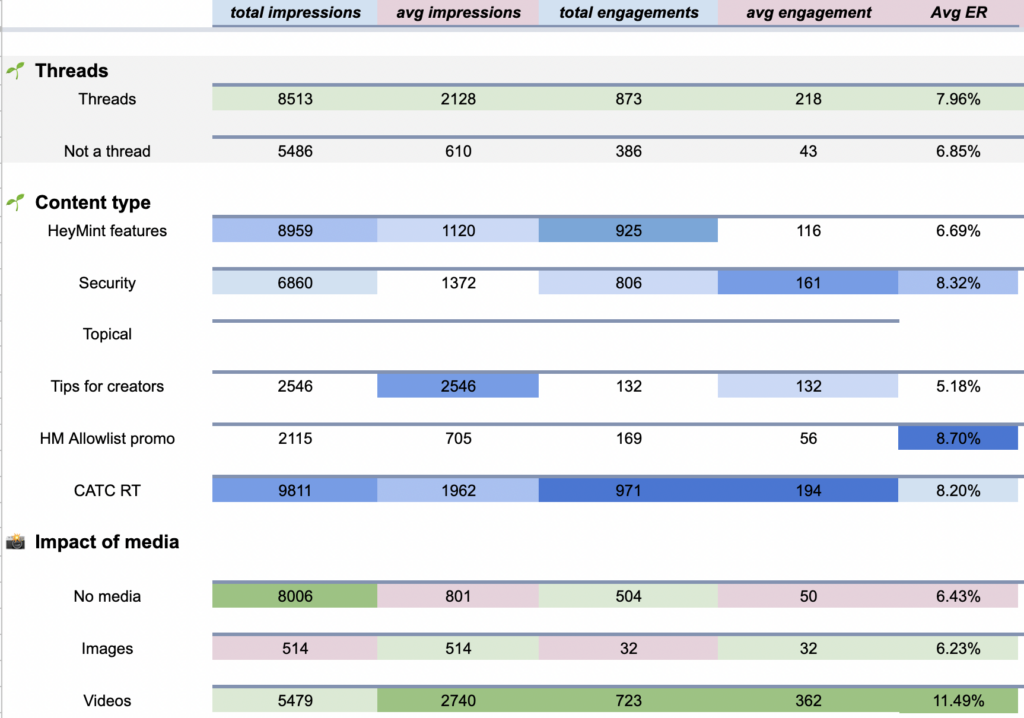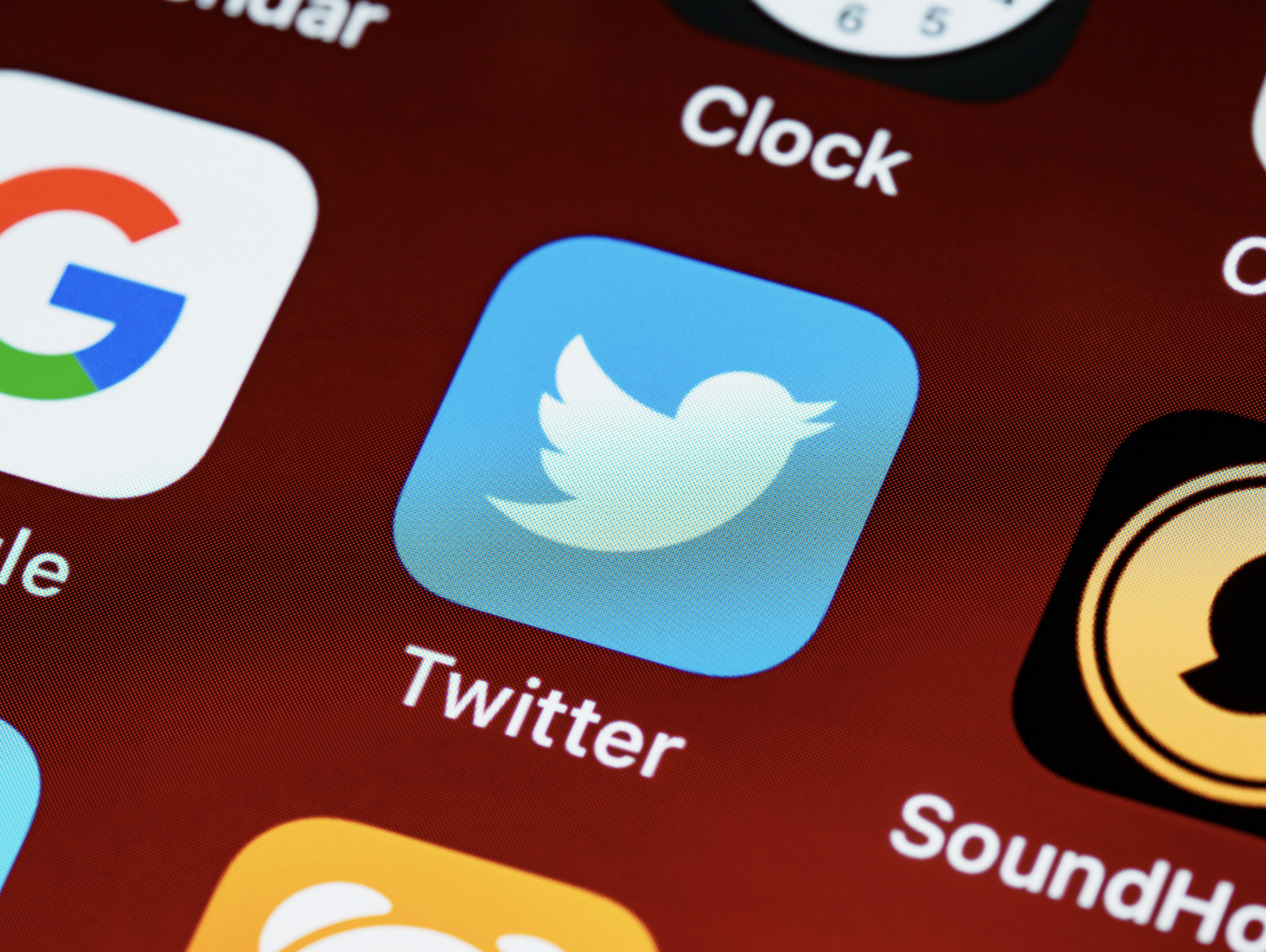Why Twitter should be a core component to your NFT marketing plan
Twitter will likely be the center of your NFT marketing plan. That platform is the heartbeat of web3 for one core reason: it’s where all the collectors stay up to date on new & promising NFT collections. To get collectors excited about what you’re building, you have to meet them exactly where they are. That is why Twitter is so important for your project’s success.
Having a thriving Twitter account is kind of like having your own personal fan club. The bigger the fan club, the more likely your project is to succeed.
The question isn’t if you should focus on Twitter, but how.
- How do you grow a Twitter following when you’re starting from scratch?
- How do you get those first 1,000 followers?
- What kind of things worked (and didn’t work!) for another successful project in web3?
Today, we’ll cover all of that & more.
In this article, I’ll break down how our Twitter account, @HeyMintxyz, went from 0-20k followers in just seven months. All with a single writer, yours truly, with absolutely zero Twitter experience.
How to grow from 0 to 20k follower in 7 months

In June of last year, I was tasked with a daunting project: grow our Twitter to 20k followers without spending $1.
Mind you, I had absolutely zero Twitter experience. At all. Zero. As in, I don’t think I have ever written a Tweet before in my life. I actually had to Google how to make a thread.
I share that despite the embarrassment just to let you know: you can do it too even if you have zero experience.
Step 1 of a successful NFT marketing plan: Understanding Twitter
I don’t mean the features of Twitter. I mean the essence of web3 Twitter. The *ethos* of web3 Twitter. To write something that actually performs on Twitter, I needed to understand what else was performing well on Twitter and why.
I set aside 2 hours every day until I could answer questions like:
- What kind of content is actually getting engagement?
- What topics do I keep seeing in my newsfeed?
- For thought leaders that have around 20k followers, how did they get there? What were their earliest posts? How did their content change for today’s climate?
- For big thought leaders: how do they stay relevant? What kind of content are they known for? Why?
Having a pulse on good content gave me something to model after. Leaders with hardcore fans seem to make content that is truly, deeply valuable to their audience. They did it from day one, even with no followers.
Step 2: Picking a target audience for your NFT marketing plan
This was a collective decision, and admittedly an easy one. The tools we were building were centered around a few core concepts: education about web3, empowering creators to take the leap of faith to start a project, and equipping creators with the tools they need to do so.
We wanted to grow our Twitter for two reasons: (1) Show legitimacy for our tools and (2) get more users for those tools
This made our initial content direction very clear: I need to write content that targets creators. Not collectors. Not web3 as a whole. Not crypto people. We want to be on a NFT creator’s radar.
Once you identify your target audience, you can start thinking about what is valuable to them: what problems do they have? Are there insights that could help them succeed? What would they be grateful to learn? What do they need most?
Step 3: Getting our first 500 followers by comparing ourselves to competitors
Things that worked:
Highlighting the fact that we’re a free alternative to our competitors.
At the time, our main competitor was an incredible tool that we knew many creators were actively using. While it was a great product, it was quite expensive. We pointed this out and offered our own allowlist manager as a free alternative with all the same features and more.
Over time, we tried a few different angles of this, like posting how much money creators have saved by using us instead, and retweeting anybody who wrote something positive about us being a free alternative for creators.
We highlighted feature announcements that didn’t exist anywhere else.
The key here was to clearly express that we were the ONLY place to find these features, and they were 100% free.
Step 4: Getting our first 500 followers by writing educational content

We branched away from the “we’re better than our competitors” vibe and experimented with a more educational approach.
Things that worked:
Really informative threads, like “How to succeed in web3 if you’re an average person who doesn’t have any special connections” (something that, we hoped many people would relate to and would find informative)
In-depth case studies with actionable advice, like how Curious Addys grew a Discord audience from 0 to 25k in two months.
Step 5: Experimenting with your NFT marketing plan by targeting a slightly wider audience
Up until this point, we were very focused on creators only. But! One day, I noticed something different about my news feed. Typically, I would wake up and see a mix between educational threads, projects promoting their upcoming mints, new artwork releases – the usual web3 content.
But one morning, it seemed like everybody was writing about the importance of security. So, what did I do? I wrote about security too. We learned:
Writing about trending topics is really beneficial, especially if the news is super relevant to your audience.
With security being a trending topic in the web3 space, we had an opportunity to highlight our own security features, all the features we built to keep our users safe, and emphasize that we have been lucky enough to never experience a compromise.
Not only did this content resonate well with our users, who felt reassured that they were in good hands, this content got impressions that far surpassed the amount of followers we had.
Step 6: Let’s take a pause and talk about analytics

There’s no such thing as an excellent NFT marketing plan without focusing on analytics. Whenever we add strategies (whether it’s Twitter content, or anything else) to our NFT marketing plan, we’re admittedly doing a bit of guess work, right?
Sometimes, we do some research on something that succeeded for somebody else, and we want to see if we can emulate similar results. This is a wonderful start. But! Marketing doesn’t stop there: you have to take time to check in with yourself and see if your hypotheses were actually correct.
I’m a big believer in data driven decisions. I don’t like guessing for too long, because who’s to say that I’m the best guesser? I certainly don’t think I am. It almost feels egotistical to suggest that any person’s “gut feeling” is the end all be all of decision making.
Because of this, I started making pivot tables early on in our Twitter journey. They were unnecessarily complicated, but fun to take a peek at and learn from:

My point here is not that you should be making a pivot table each month – you really don’t need to do that. But, what you do need to do is develop confidence in your NFT marketing plan on Twitter by looking for patterns in how your content performs.
If you are releasing content consistently (a few times a week, at least) you should begin seeing patterns within a month or two.
Look for the outliers:
What topics bring in significantly more impressions than others?
Are there any topics that people tend to comment on more?
Are you noticing any patterns in what kind of content your audience is retweeting?
Patterns change, especially in a market like this where news and overall sentiment can fluctuate quite a bit. So, it’s important to stay flexible and be willing to adapt and try new things to continue writing relevant things.
In the early days, data helped us realize: all Tweets should have some kind of visual media, all Tweets should be threads, and writing on news/trending topics is a great way to get new people exposed to our content.
I’ll acknowledge that in the beginning, it’s difficult. On week 1, you may be looking at tweets that got 4 impressions versus 5 and don’t know what to make of it. When that happens, you don’t need to make any big decisions. Just continue testing content until something stands out as a bigger winner.
Step 7: Consider other growth mechanisms for Twitter
Good content isn’t the *only* way to grow on Twitter. An idea struck one day when we were working on our allowlist manager. For context, the tool is totally free. We don’t ask for anything at all. I know I’m biased, but the tool is pretty incredible. It’s very robust, super customizable, and pretty wild that it’s 100% free.
It kind of reminds me of Wikipedia – a wonderful resource, totally free! Guess how much they made from donations last year? $165 million.
What if we asked people who used our tool for a donation too? Except instead of money…what if we asked creators to add a follow requirement for @heymintxyz ? Even if just 1% of creators agreed, it would be helpful.
We added this to the platform in hopes that generous creators would help support our mission.
Another growth strategy we tried was incorporating the beta launch to our new tool: Launchpad, a no-code smart contract generator.
We announced to Twitter that we would be opening up a beta launch, but ONLY to those who held our soulbound token. How do you qualify to receive that token? By following and retweeting this tweet:
The conclusion: writing content isn’t the only thing you can rely on to fuel your growth.
Some NFT marketing plan failures
I won’t act like it was all smooth sailing. There were just as many failures (or learning lessons!) as there were successes. To name a few:
Offering to feature other NFT communities didn’t work. We thought that other projects would love to have a project spotlight, but the response to tweets promoting this offer were very few
Asking for feedback. Turns out, people enjoyed reading our feature announcements BUT Twitter was not the best way to receive feedback.
Feature announcements. Feature announcements ARE good, but they are typically not good for growth. These announcements, for the most part, are an amazing way to keep users updated and show off the wonderful things we’re continuing to build. They are an important, and 100% necessary aspect of our product’s public facing channels. However, we believe that these announcements typically are not a reliable source of growth. We see feature announcements as a way to keep our community updated, rather than a way to get a ton of impressions.
Giveaways. Maybe it’s the bear market, maybe it’s our target audience – who knows. What we found from testing out giveaways is that they don’t make a big impact on engagement nor followers. We ultimately realized that the kind of people that are really excited aren’t exactly our target demographic, which is creators.
Final thoughts on going from 0 to 20k followers
- The first 1k users is by far the hardest, both strategically and emotionally. Don’t be discouraged, don’t give up! Figure out who your target audience is: BE SPECIFIC!
- Make hypotheses on what your target audience is compelled by.
- Have weekly analytics check ins to identify promising paths and cut out strategies that simply aren’t working
- Be flexible with your conclusions: topics that got a lot of engagement 6 months ago may not be as engaging today, that’s ok! Stay nimble.
- Commit to a specific duration to try something out, (ex: Let’s focus on getting partnerships for 1 month. If we don’t reach X goal by then, let’s pause that and try something else)
- Have no ego. When you are open to being wrong, and open to failure – you leave room in your mind to explore other creative solutions that may be worth trying.
Further Reading

NFT Collab: How to Partner with Big Projects
4 Necessities for Successful NFT Marketing
How to Grow Your Discord Server: for Web3 & NFT Projects
How to Start an NFT Collection
9 Things That Prevent You From Getting “Sad” as a Web3 Founder in a Bear Market
